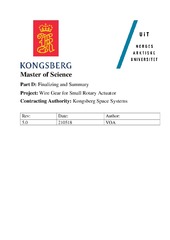Services for Space Mission Support Within The ESA Space Situational Awareness Space Weather Service Network
Permanent link
https://hdl.handle.net/10037/16554Date
2017-01-05Type
Journal articleTidsskriftartikkel
Peer reviewed
Author
De Donder, Erwin; Crosby, Norma B; Kruglanski, Michel; Andries, Jesse; Devos, Andy; Perry, Chris; Borries, Claudia; Martini, Dániel; Glover, Alexi; Luntama, Juha-PekkaAbstract
Spacecraft operations are by nature complex and every satellite's operational environment poses a range of potential risks, often a unique combination for a given orbit. The implications of interruptions of operations, data transfer and service provision, are serious, both in terms of cost and capability, thus it is imperative to mitigate against all operational risks to the fullest extent possible.
In the frame of its Space Situational Awareness (SSA) programme, the European Space Agency (ESA) is establishing a Space Weather Service Network to support end-users, in a wide range of affected sectors, in mitigating the effects of space weather on their systems, reducing costs and improving reliability. This service network is currently in a test and validation phase and encourages user engagement and feedback.
The network is organised around five Expert Service Centres (ESCs) focusing on Solar Weather, Heliospheric Weather, Space Radiation Environment, Ionospheric Weather and Geomagnetic Conditions. Each ESC is connecting different expert groups, federating their space weather products, and ensuring the quality and consistency of the provided information. The service network also includes a central Data Centre and the SSA Space Weather Coordination Centre (SSCC).
In this presentation we give an overview of the current status of the network (http://swe.ssa.esa.int/), the targeted end-user groups and Expert Service Centres with a focus on the space community.
Description
Publisher
OMICS InternationalCitation
Donder, E.D., Crosby N., Kruglanski, M., Andries, J., Devos,A., Perry, C., ... Luntama, J.P. (2017). Services for Space Mission Support Within The ESA Space Situational Awareness Space Weather Service Network. Journal of Aeronautics & Aerospace Engineering, 6(1), 180. https//dx.doi.org/10.4172/2168-9792.1000180Metadata
Show full item recordCollections
Related items
Showing items related by title, author, creator and subject.
-
The science case for the EISCAT_3D radar
McCrea, Ian W.; Aikio, Anita; Alfonsi, Lucilla; Belova, Evgenia; Buchert, Stephan C.; Clilverd, Mark; Engler, Norbert; Gustavsson, Björn Johan; Heinselman, C.; Kero, Johan; Kosch, Mike; Lamy, Herve; Leyser, Thomas; Ogawa, Yasunobu; Oksavik, Kjellmar; Pellinen-Wannberg, Asta; Pitout, Frederic; Rapp, Markus; Stanislawska, Iwona; Vierinen, Juha (Journal article; Tidsskriftartikkel; Peer reviewed, 2015-07-29)The EISCAT (European Incoherent SCATer) Scientific Association has provided versatile incoherent scatter (IS) radar facilities on the mainland of northern Scandinavia (the EISCAT UHF and VHF radar systems) and on Svalbard (the electronically scanning radar ESR (EISCAT Svalbard Radar) for studies of the high-latitude ionised upper atmosphere (the ionosphere). The mainland radars were constructed ... -
A Human Rights Paradox? The Isolated Indigenous Peoples in the Amazon and the Non State Space
Matamoros Pineda, Jennifer (Master thesis; Mastergradsoppgave, 2016-05-23)The isolated condition in which many indigenous peoples live in the Amazon magnifies their vulnerability to human rights violations and abuses, and challenge the states, as duty bearers, to guarantee and protect fundamental human rights for peoples who do not want to be part of state zones. This dissertation pursues to analyse how the implementation of the existing human rights legal framework and ... -
Wire Gear for Small Rotary Actuator intended for Low Earth Orbit Applications.
Aarud, Vebjørn Orre (Master thesis; Mastergradsoppgave, 2018-08-16)In this master thesis, a small rotary actuator with wire driveline intendent for space solutions is developed and tested. The replication of the environment with focus on surface friction, surface roughness, and more dynamical related features are considered. Features like temperature, vibration, radiation and more are excluded to limit the size. This because the field of interest in this iteration ...


 English
English norsk
norsk


